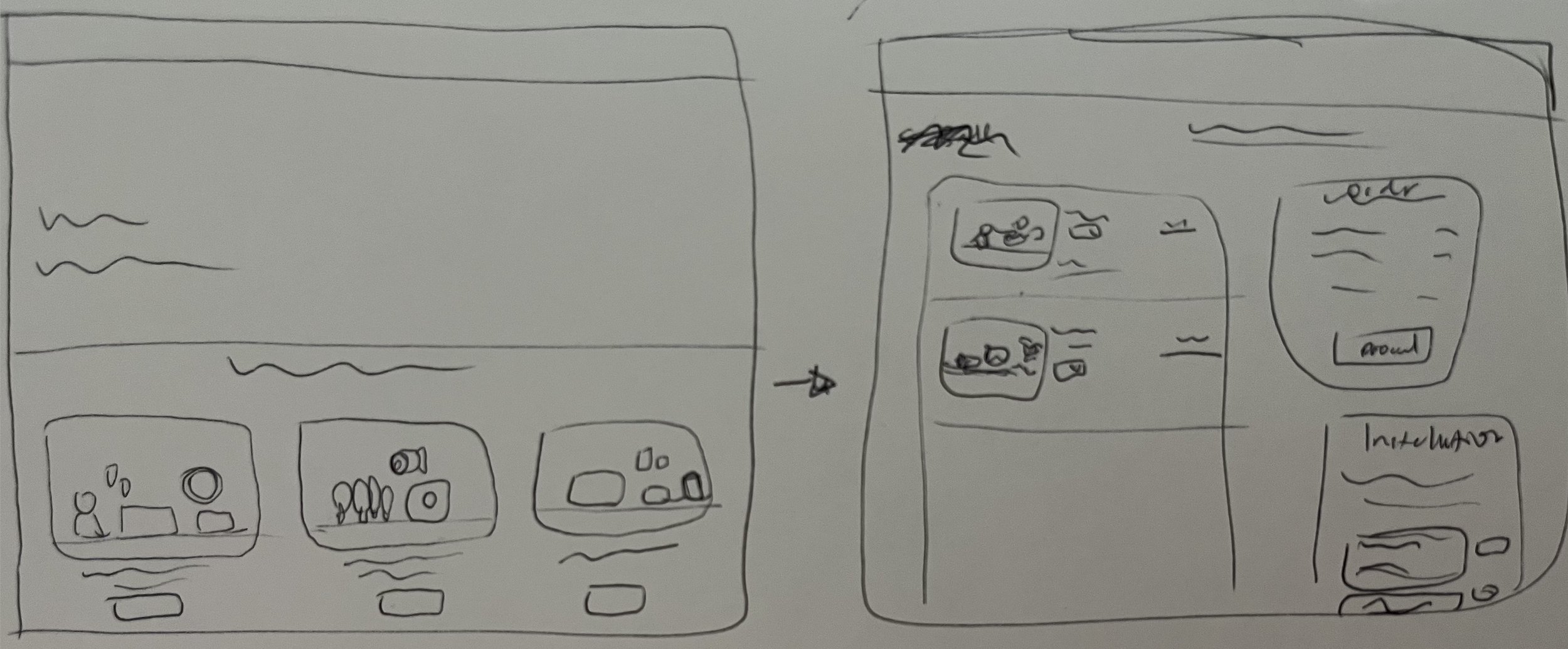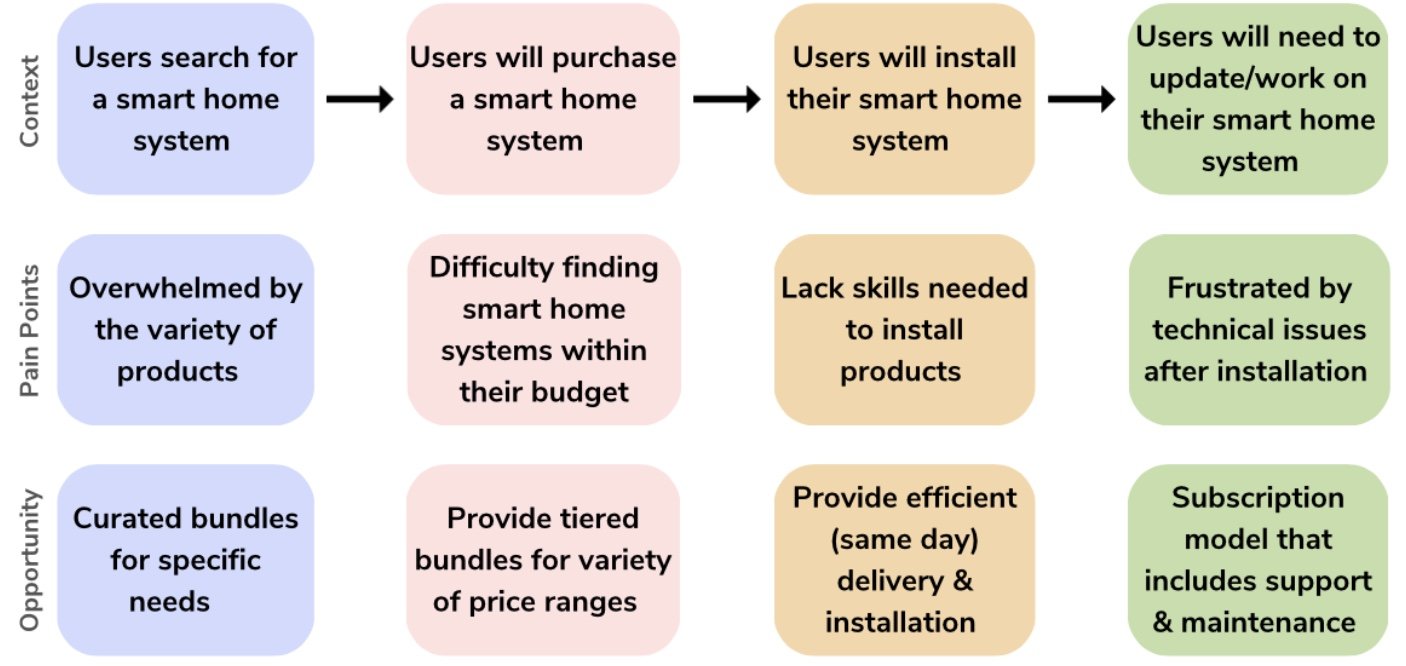Duration
20 weeks, Nov - March 2023
My Role
UX/UI Designer & Front End Developer
Shop Provincial E-commerce 🛒
As a UX/UI Designer on the Shop Provincial project, an e-commerce venture by PSHS targeting new smart home consumers, I collaborated closely with a multidisciplinary team including a product manager, content creator, two engineers, and a business analyst. Our goal was to design a cutting-edge online store that not only offers smart home products but also seamlessly integrates PSHS's installation services.
For additional information on this project, contact me at hahmed08@uoguelph.ca
The Challenge 👊
The Shop Provincial project embarked on a transformative journey, pivoting from PSHS's traditional HVAC installation business to an innovative e-commerce strategy for smart home products. The initial challenge was to develop a new website from scratch, moving away from an outdated WordPress site, to better serve the evolving needs of the market and the company. This transition aimed to address the critical issue of building trust with consumers, who previously entered false information due to skepticism, and to shift the business model towards a more sustainable and scalable online platform.
Initial Website & Goals
Decrease Reliance on Leads
Reducing dependency on low-quality leads by implementing a robust e-commerce platform that encourages genuine user interactions and conversions, without necessitating a sales team's intervention
Lifetime Value of Customer
Strategizing to elevate the lifetime value of customers by offering superior product selections, seamless installation services, and engaging in meaningful ways that encourage repeat business and brand advocacy
How might we leverage innovative e-commerce strategies and personalized digital experiences to transform consumer skepticism into trust and loyalty, thereby enhancing the lifetime value of customers in the smart home industry?
Research Insights 🔍
Through surveys and interviews, we gained invaluable insights into the preferences and challenges faced by smart home consumers. Key findings revealed a strong preference for sustainability, seamless product compatibility, and reliable after-sales support. Interestingly, contrary to our initial assumptions, the most significant frustration among users was not the installation process but the updates and technical issues that arose afterwards. This insight has been crucial in guiding our strategy to enhance customer support and product offerings, ensuring we address the real pain points of our consumers.
Curated Bundles
Users desire curated bundles that combine quality and affordability, emphasizing the need for well-integrated, cost-effective solutions
Personal Experiences
Developing a user-centric website that offers personalized shopping experiences, ensuring that consumers find value and relevance in their journey, thereby fostering trust and loyalty
Pain Points & Opportunities 🎯
Lack of Skills
The lack of time or expertise for installation among users highlights the importance of offering convenient, same-day installation services
Consumers who lack the technical skills needed, want a smart home system that is coherent and fits their needs, while also being provided the proper support and assistance.
Competitive Analysis 📊
2. Bell
Only offers security bundles
Need to submit a form and speak to specialist in order to purchase
DESIGN CONCEPTS FOR BUNDLES
So many roads, so many detours, so many choices, so many mistakes
Post Installation Support
A strong demand exists for continuous support and assistance post-installation, underscoring the value of maintenance subscriptions for consumer satisfaction
1. Google
Limited bundles
Insist users to build packages that can be overwhelming to beginners
Third party installer
Lack of Support
Quiz Flow
After evaluating three bundle options for our smart home products—personalized quizzes, build your bundle, and pre-made bundles—we concluded that pre-made bundles are the most effective. This decision was based on their ability to simplify the buying process for customers, by avoiding overwhelm and providing clear pricing, while also allowing for easier stock management and streamlined installation processes on the business side. This strategy aligns with both consumer preferences for straightforward shopping experiences and our business objectives of efficient cross-selling and upselling.
User Journey 🛤️
Usability Testing Insights 🧪
In response to customer feedback, we tested the inclusion of individual products alongside bundles in the checkout process. The A/B testing revealed that 80% of customers preferred adding individual items, compared to only 30% for additional bundles. This compelling evidence led to a strategic shift, convincing management to focus on upselling and cross-selling single products, significantly altering our e-commerce approach.
Final
In response to customer feedback, we tested the inclusion of individual products alongside bundles in the checkout process. The A/B testing revealed that 80% of customers preferred adding individual items, compared to only 30% for additional bundles. This compelling evidence led to a strategic shift, convincing management to focus on upselling and cross-selling single products, significantly altering our e-commerce approach.
Final
Build Bundle Flow
Premade Bundle Flow
Wireframes 🕸️
Initial
INTERACTABILITY
Initial
FINAL DESIGNS
Home Page
Visuals
CTA
SEO
Customer Account
Providing updates
Provide support
Store data for personalization
Check Out
Upsell and cross sell
Reduce cognitive load
Error management
Take Aways + Next Steps
Finding the balance between user experience and business goals
Throughout this project, my key learning was striking a balance between prioritizing user experience and achieving business objectives, emphasizing the importance of a user-centric approach despite the focus on revenue generation. As we continue developing the website, my attention is on finalizing the mobile version and maintaining close collaboration with the engineering team. While I had envisioned integrating an AI personalization engine to enhance user engagement, budget constraints have postponed this addition. We currently are anticipating the launch and subsequent data analysis afterwards to refine and evolve our user experience strategies further.
























